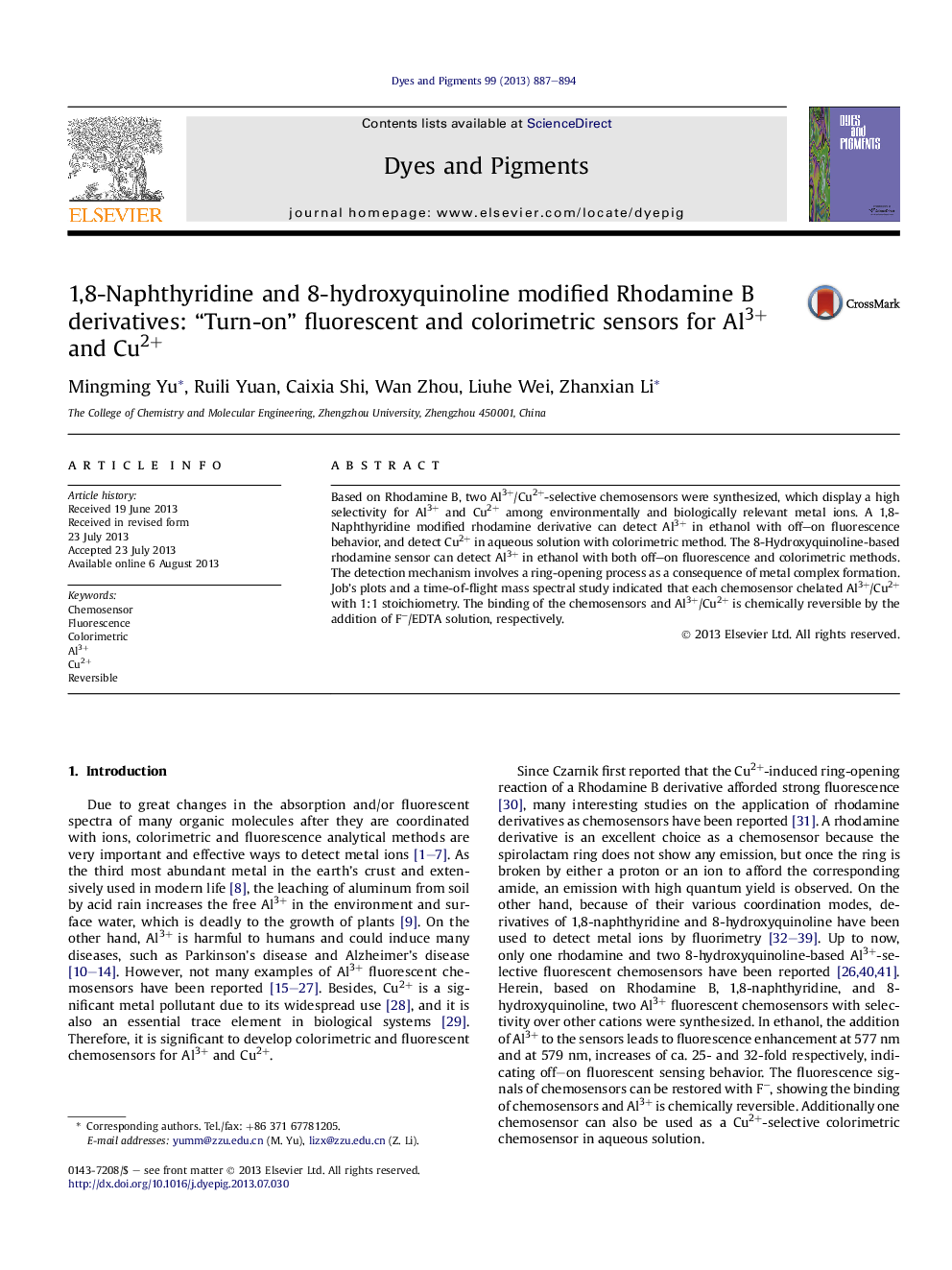| کد مقاله | کد نشریه | سال انتشار | مقاله انگلیسی | نسخه تمام متن |
|---|---|---|---|---|
| 176380 | 458941 | 2013 | 8 صفحه PDF | دانلود رایگان |

• Two colorimetric and off–on fluorescent rhodamine-based sensors were synthesized.
• The sensors display high selectivity towards Al3+ and Cu2+ with only minimal interference from other ions.
• The detection mechanism involves a ring-opening process as a consequence of metal complex formation.
• The binding of sensors and metal ions is chemically reversible with F− or EDTA.
Based on Rhodamine B, two Al3+/Cu2+-selective chemosensors were synthesized, which display a high selectivity for Al3+ and Cu2+ among environmentally and biologically relevant metal ions. A 1,8-Naphthyridine modified rhodamine derivative can detect Al3+ in ethanol with off–on fluorescence behavior, and detect Cu2+ in aqueous solution with colorimetric method. The 8-Hydroxyquinoline-based rhodamine sensor can detect Al3+ in ethanol with both off–on fluorescence and colorimetric methods. The detection mechanism involves a ring-opening process as a consequence of metal complex formation. Job's plots and a time-of-flight mass spectral study indicated that each chemosensor chelated Al3+/Cu2+ with 1:1 stoichiometry. The binding of the chemosensors and Al3+/Cu2+ is chemically reversible by the addition of F−/EDTA solution, respectively.
Figure optionsDownload as PowerPoint slide
Journal: Dyes and Pigments - Volume 99, Issue 3, December 2013, Pages 887–894